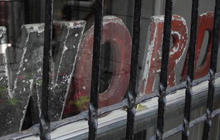On Being White…and Other Lies, Part 1.
“You know you’re white, don’t cha?”
“This is a very good collection of books here. Too bad I’d have to buy them from you.”
The colors of these speakers, my clientele, aren’t the same but their sentiments are. White man/black books. That ain’t right.
Amalgamation or miscegenation? N—– Lover or C—– Bandit? Enquiring minds read the shelves of the shop and want to know: “What makes you so interested?” Shirley, several young men have mistakenly presumed, They, and not black history, literature or art, must be what I am really into. As witty, frivolous, well-toned and amusing as Uptown’s bon vivants can be, I’m not.
“Is your wife black?”
No, but once you get to know her you hardly even notice.
“Then what makes you so interested?”
It’s certainly not the money. The vast majority of my clientele, the 99%, cannot get past that I am white and 99% of Jumel Terrace Books stock is black to get on to buying or talking about a book. Xenophobia, which is at the hubristic root of racism, even sexism, cuts both ways, neither of which are good for business. Add to their ranks the post-colored TVs with their eyes on the screen, my tech-no-logic ever-internet ready critics whose Enquiring Minds want to catch me out of their Virtual Now: “I bet you didn’t really read all these books, did you?” parry those who read phones.
But that don’t make them phonies, right? Why anyone would identify themselves as a nerd is beyond me. I patiently explain that eight years ago, when the shop opened, I had, in fact, filled it with my own used books. Since then I’ve bought and sold and, No, I haven’t read all the books in the shop anymore. Nevertheless, I know the books and they don’t and if there is anything Americans in the Virtual Now don’t like it’s “a Intellectual” – “thinks he knows so much…”- ” ‘cause he believes what he reads in books.” They know better than to read books.
When asked why I read so much about black people and live in Harlem, to cut the conversation short I’ll say, “I had a bad experience with white people when I was young.” Who hasn’t. My neighbor’s response is most often,” Me, too,” at which point we either bond over our common interests or go on our Merry Tunes ways. Sales figures reflect few going my way.
Few of our neighbors have never visited the Morris-Jumel Mansion, across the street from the shop. The house Edward Kennedy Ellington called “The Crown of Sugar Hill” was, in 1776, George Washington’s headquarters for the Battle of Harlem Heights, the psychological turning point of the American Revolution, and hosted the anti-Colonialists Jefferson, Adams, Burr and Hamilton (who I sometimes think Burr didn’t shoot soon enough). I’m often asked if white people live there. The vast majority of our visitors, native New Yorkers included, are as unawares our local history includes the Duke, W.E.B. DuBois, Walter White, Ralph Bunche, Paul Robeson, Count Basie, Lena Horne, Thurgood Marshall, Canada Lee, Coleman Hawkins and Harry Belafonte. Too often, now days, one needs to explain who they were, as they are pre-Motown.
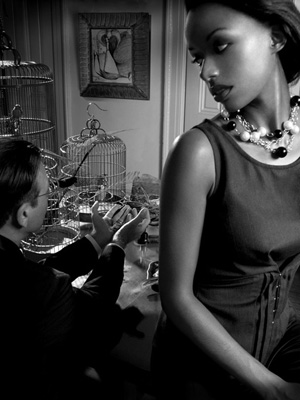 “Who knew?” my indignorent provocateurs wanna know when I tell them who’s who and even where they are. Nobody ever told them and how could they be expected to know what’s hidden in plain sight? Illiterate, they are credible. Nobody ever told them. They can’t be expected to have read books. If it’s so important it’d be on tv. They could find it out on the internet in a second, if they wanted to know. But they don’t.
“Who knew?” my indignorent provocateurs wanna know when I tell them who’s who and even where they are. Nobody ever told them and how could they be expected to know what’s hidden in plain sight? Illiterate, they are credible. Nobody ever told them. They can’t be expected to have read books. If it’s so important it’d be on tv. They could find it out on the internet in a second, if they wanted to know. But they don’t.
I want to shake them, sometimes. Racism is absurd, haven’t you heard? The facts don’t add up to the truth. Ethnicity, gender and geography are accidents at birth. Exceptionalism is a joke played on people who exempt themselves. In the Grand Crapshoot, I rolled white, heterosexual and rural, none of which have worked out particularly well. How would you like to wake up every day, look at yourself in the mirror and be reminded of boiled pork?
People, as I’ve said, do not give it credence that anyone born in mid-state Minnesota could, or should, be a book dealer of local history on Harlem Heights. I t is not good for business. As for straight, at this age I look back and wonder if most of my lovers wouldn’t have made better friends and some of my friends wouldn’t have made better lovers. I’d certainly have had more opportunities.
And as for rural, I left the second time it made me sick. The first time the homeland made me sick I was three and diagnosed “allergic to the world.” My respiratory system, rebelling against the elements, quarantined (a ‘bubble-boy’) and medicated me, like Proust (and you know how I like Proust), with opium (and you know…). In my mind’s ear I can hear my doctor, an obese smoker, saying to my parents, frustrated by obtuse diagnosis and in imitation of the ‘croaker’ out of William Burroughs Naked Lunch, “Give the boy to me, I’ll take care of him.” The alternative treatment: shots of pharmaceutical opium thrice a week and doses of paregoric as needed. Sweet dreams, little fellah.
At least one US manufacturer (Marathon) still makes a true opium product. It is by no means a “pure opiate” but a mix of morphine, codeine, other opiates that occur naturally on the poppy plant. In 1957, Paregoric – an elixir for asthma – was a staple in the family medicine cabinet but I had my own bottle to use as needs be. It’s essentially an opium martini used to calm fretful children and I had as much reason to fret as I had reason to read. When the doctor, my dealer, died I was eleven and the prescription never refilled. Miraculously, and I believed in nothing so much as miracles at the time, I was cured, which was a very good thing because we weren’t going back to the pharmacy after their impertinence!
“What do you mean you can’t fill the prescription without a refill? You’ve been filling it for seven years. You know Dr. Blake’s died.”
“Lady, that’s a narcotics script. It’s against the law to fill one without Doctor’s orders.”
“What are narcotics?” mother wanted to know.
“Like heroin. You know, like you see them colored people in Life Magazine takin’.”
Thus did race enter my life, a lurid urban expose impinging on our country life, gentri-frying my brain. While my physical withdrawal amounted to little more than something like the flu, the psychological consequences were profound. My brain’s circuitry rewired, my quasi-mystical, soporific, celestial thrall imploded and life was not a dream. Things fell apart. Not just for me. What friends I had didn’t know me anymore. The President’s assassination had, unlike anything until September 11th, changed everything. Birmingham happened. Martin happened. I was like one of those people in the ghetto and who were they? Malcolm happened. Coltrane happened. Atlantic, Stax & Motown happened. James Baldwin happened. Stokely happened. Miles smiled.
In my drug’s stead I found my way to a finer world within the world: books. Black on white. And as I started to read black on white I noted how different it was from white on black. My mysteries became histories, which are memories, and what are memories but imagination? Of my forty years dealing books, thirty-eight have been in New York City. Since leaving I have looked back, reading and, whenever possible, living history.
Dream on, y’all.
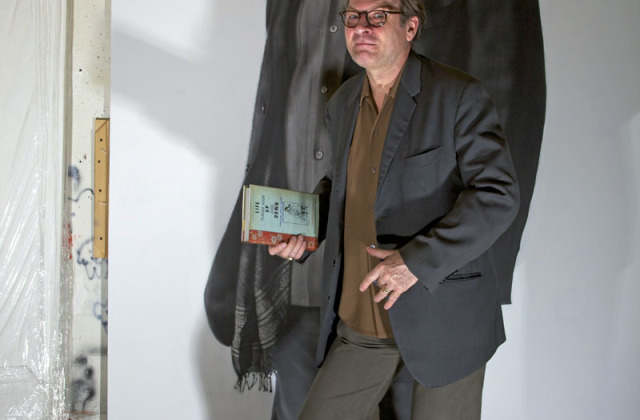
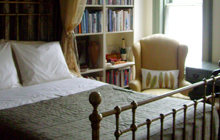 Jumel Terrace B&B
Jumel Terrace B&B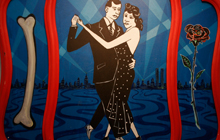 Life Turns Man Up & Down
Life Turns Man Up & Down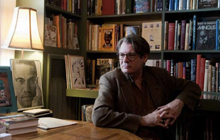 The Private Library
The Private Library